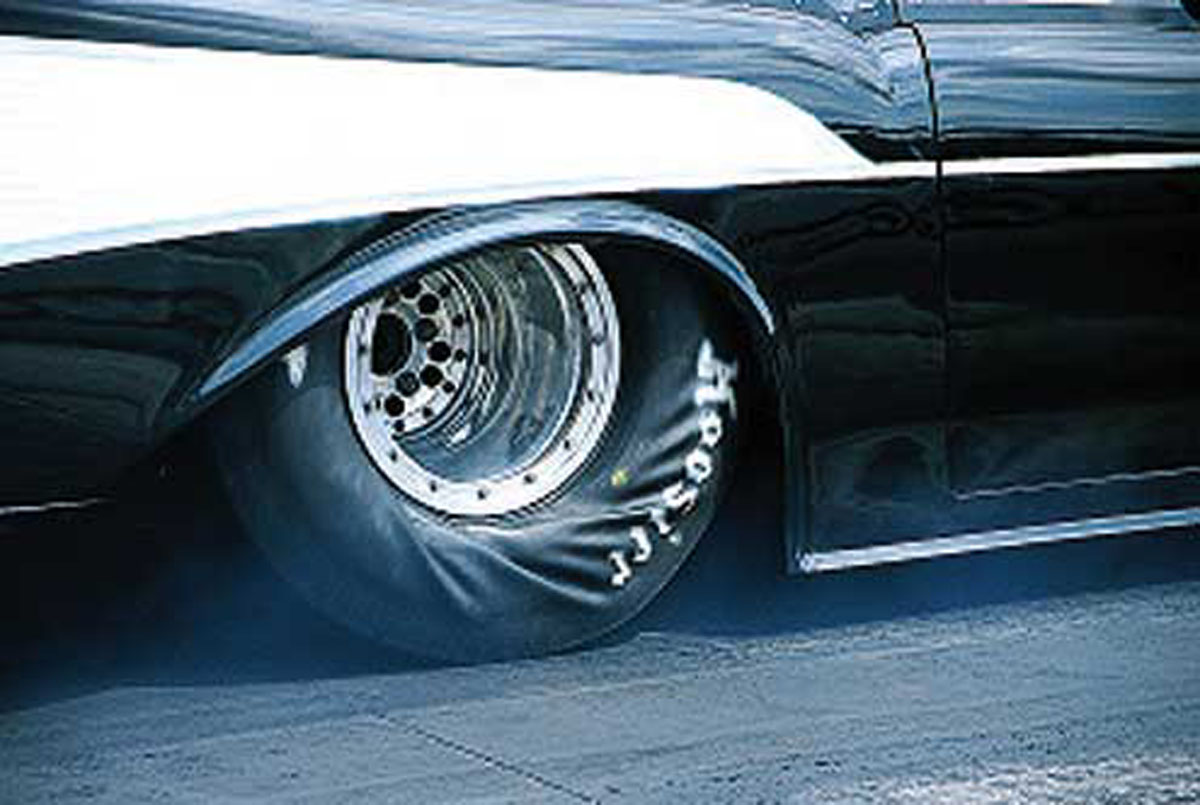Top 5 Issues Impacting Your Drag Racing Suspension Performance

November 29, 2021

The best way to win a drag race isn't to squeeze more power out of the engine.
Sure it's part of the equation, but equally important is your car handling the way you want it. For your vehicle to launch straight while transferring weight to the rear tires in a controlled manner and smoothly back to ride height again, you need a properly built and tuned suspension setup.
Top drag racers understand that an adequately tuned drag race suspension is critical. You've spent as much money as possible under the hood, and now you want to get traction under control.
Drag Racing Suspension Performance Issues
As we explore issues you might face with drag racing suspension setups, keep in mind that every application will require a different setting, depending on vehicle weight, suspension geometry, available traction, and horsepower, to name a few.
Once you understand what happens when you launch your car and what it does or doesn't do, you'll have the advantage over your competition because your settings are customized to your vehicle.
#1. You're Not Launching Straight
Launching a car successfully is a combination of rear suspension, rear shocks, front travel, and front shocks. What's happening when you're not launching straight?
When going from sitting idle to maximum acceleration, suspension works to provide maximum traction. If your car lifts the driver-side front tire more than the passenger side, you've got a bad case of body roll. This also affects the rear tires and, ultimately, traction.
Most cars drive to the right. Many drivers are so accustomed to this happening that they don't realize how it affects the car. You can prove that this happens by having someone film you and zoom in on your hand.
If you don't correct the wheel, you won't launch straight, wasting precious seconds. But, sudden steering adjustments at high speed can lead to dip and sway as you attempt to get the vehicle back on course.
#2. The Wrong Shocks
Having the proper springs on your car is pointless if your shocks can't control them.
The correct shocks are a worthwhile investment and are dialed into your specific needs. They need to be balanced from front to rear, and the only proper way to do that is to adjust the settings incrementally and then test.
With cars of around 300 to 350hp, you can afford to be less picky. Vehicles with this power don't need as much suspension to make the tires hook.
Once you're in a car with more than 350 hp and beyond, you need to be thinking about fully adjustable shocks to ensure you're squeezing the best performance out of your suspension.
Learn more about What to Look for in the Best Rear Shocks for Drag Racing.
#3. You're Only Focusing on Your Rear Shocks
Front shocks play an essential role in the overall suspension setup. When you launch, the car's front comes up as weight is transferred to the rear tires as you pump the gas.
Whether you're in a Top Fuel, Funny Car, or Pro Stock, most successful runs include a controlled wheel stand–facilitating maximum weight transfer without a huge wheelie.
The springs control how fast the front end rises, controlled by spring rate and front shocks.
If too much weight transfers to your rear tires, you'll experience an excessive wheel stand that will hurt your elapsed time.
You'll need to analyze how quickly and how high the front end comes up. If it's just enough to fully extend the suspension and pull the tires from the racing surface, that's your optimum weight transfer.
Your best bet is to start with your front shocks set on the softer side for maximum weight transfer and tighten them incrementally once you see how the car reacts.
#4. You Can't get the Traction you Want
Your goal should be to maintain traction by controlling the rate at which weight and torque are transferred to the rear tires.
What happens after you launch?
What should happen is your front end should rise in a controlled manner, enough to keep the rear tires loaded, facilitating better traction, and then slowly settle and smoothly transition to ride height as you accelerate down the track. If your rear shock rebound is too stiff, you limit the amount of weight transferred to your rear tires, resulting in poor traction.
It's a balancing act.
Too soft springs or too light shock rebound means the front end of the chassis might separate from the wheel too violently, causing a jerking motion. In turn, the rear tires will hook but might lose traction as the front end begins to travel downward.
If you can slow the rate at which the front end rises and rebounds, the rear tires will benefit from more traction. But, if your front shocks are too stiff, your tires will strike the track rather than gently settling down.
#5. You Haven't Tested Enough
Many suspension issues can be overcome with the correct shocks, a finely tuned setup, and continued support from your shock provider in tandem with your team.
You need to test and retest to make the most out of your adjustable shocks.
For example, your rear shocks should be as stiff as possible before a loss of traction occurs. Depending on your car, its ride height, tire size, and weight distributions, the resulting shifts in the center of gravity will require shock setting adjustments.
With a highly adjustable shock, the range of adjustments is exponentially greater, meaning you can test and retest to optimize your setup.
Learn more about Top 5 Tips for Drag Racing Shocks Setup.
Give Yourself a Head Start
Working with Penske Racing Shocks means you're working with industry leaders.
Here's 104-time NHRA National Event Winner Dan Fletcher – "The first step to winning a drag race is having your car launch identically round after round, both for consistent ET's and RT's. As a professional racer, I only use the best products available, and that's why I choose Penske shocks."
Penske has a team of experienced shock technicians, many of whom have worked for championship-winning teams and a track record of delivering results. In short, they know what works and how to get the best out of your application.
A team that teaches you how to get the best out of your customized shocks is transformational. When you leverage the S3 program, you give yourself an immediate advantage over your competition. Reach out today and find out how you can optimize your suspension setup.

%20(1).png)
